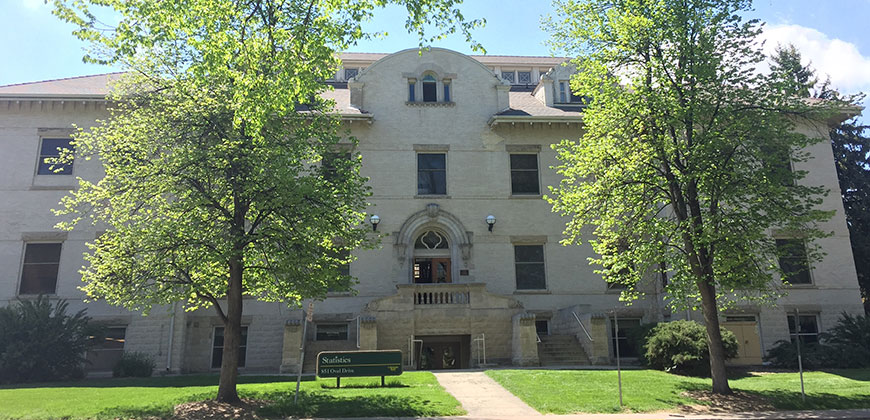If data is the language of science, then those who can parse and analyze tomes of that language are essential to scientific discovery.
On the second floor of the historic Statistics Building, in the College of Natural Sciences[1], lives a laboratory that does just that.
Unlike most labs at Colorado State University, there are no safety goggles required – nor are there test tubes or high-power microscopes. The Franklin A. Graybill Statistical Laboratory[2] runs on brain power, computing power, and creativity.
Showcasing the land-grant mission of education, research, and service, the “Stat Lab” offers statistical consulting to faculty, students, and staff, while also using these opportunities to impart statistical knowledge to its own graduate students as well as to scientific collaborators.
“We provide statistical expertise for the benefit of advancing the quality of scientific research at CSU and beyond, while educating the next generation of applied statisticians,” said Stat Lab Director and Associate Professor Julia Sharp, who joined the university at the end of 2016. The Stat Lab hopes to extend their work to more researchers on campus – as well as to non-profits, institutions, and businesses off campus.
The Statistical Laboratory, housed in the Department of Statistics[3], is also one of CSU’s campus-wide Foundational Core Facilities[4], along with the Microscope Imaging Network[5], Central Instrument Facility[6], and Proteomics and Metabolomics Facility[7], and is funded in part through the Office of the Vice President for Research[8].
Impact across fields
Statistics has long been the quiet workhorse of the scientific process. But in recent decades, with the proliferation of truly massive amounts of data and interest in complex systemic interactions, advanced statistical methods and programs – and the people who can think creatively about how and when to use them – have become essential. Today’s scientific statistics goes far beyond p-values and can shape how data are collected and how investigations are conducted.
And faculty in the Stat Lab truly do it all, Sharp said. “From equine reproduction to looking at the impacts of yoga on aging populations,” she said. “That’s the coolest part of the job. Yesterday, there was one [consulting appointment] about identifying outliers in soil temperatures from soil sensors that were placed on mountain peaks.” Sometimes the wind, weather, or critters will dig up the sensors, leading to erroneous temperature readings. Statistical modeling allowed them to “be able to dig a little bit deeper and find the signal away from the noise,” she explained
Stats for science – and science for stats
The goal of work in the Stat Lab, Sharp said, is “to help others do quality scientific research – to really add value to the domain science.” To do that, she said, “we work with the scientist throughout the project so that, not only do we understand what their objectives are, but also so there is an understanding about why a statistical method would be preferred over another method.” This collaborative work “is more like teaching one-on-one than in the classroom,” she said.
Although Sharp – and her colleagues Associate Professor Ann Hess[9], Associate Professor Phil Turk[10], and Research Associate Ben Sharp – are in the role of the consultants in these interactions, they are also learning along the way. “Sometimes the research we do for statistics comes out of an interesting problem in a project,” Sharp said. Or simply working through problems with other scientists allows them to find “how to do new and different things, statistically.”
